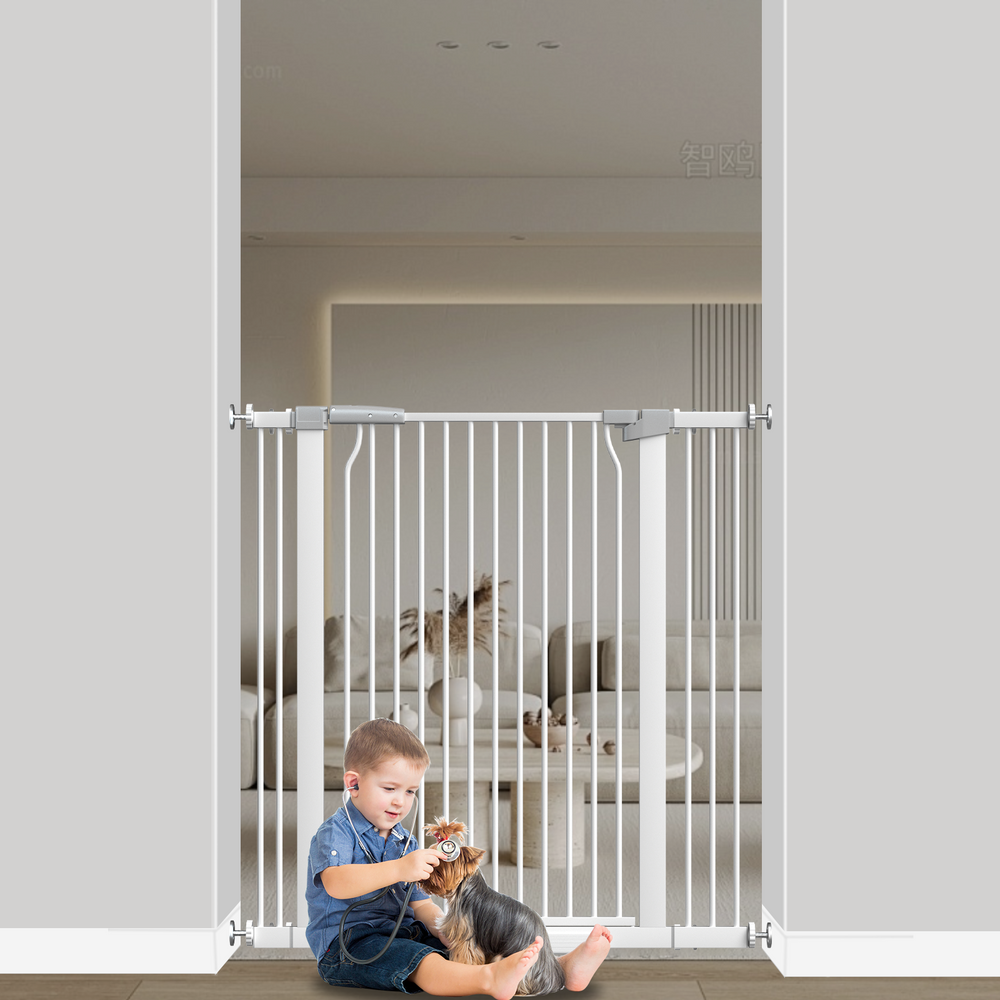How to Stop Cat Bites: Prevention and Treatment
Understanding Cat Bites
Why Cats Bite
Cats bite for a variety of reasons, and it's rarely out of pure malice. Often, biting is a form of communication. They might be scared, stressed, or feeling playful. Sometimes, it's a sign of overstimulation during petting. Understanding the underlying cause is key to preventing future incidents. It's not always easy to tell why a cat bites, but paying attention to their body language can offer clues. For example, a cat that's hissing or has flattened ears is definitely not in a playful mood.
Common Scenarios for Cat Bites
Cat bites often occur in specific situations. Here are a few common scenarios:
- Play Aggression: Kittens and young cats might bite during play as they learn boundaries. They haven't quite figured out how to control their bite force yet.
- Petting-Induced Aggression: Some cats enjoy being petted, but only up to a point. When they've had enough, they might bite to signal that they want you to stop. It can be a quick nip that seems to come out of nowhere.
- Fear or Defense: If a cat feels threatened or cornered, it might bite as a defensive mechanism. This is especially true if they're in an unfamiliar environment or around strangers.
- Redirected Aggression: If a cat is agitated by something it can't get to (like another cat outside the window), it might redirect its aggression onto the nearest available target, which could be you.
Understanding these scenarios can help you anticipate and avoid situations that might lead to a bite. It's all about learning your cat's individual triggers and respecting their space.
Recognizing Warning Signs
Before a cat bites, it usually displays certain warning signs. Recognizing these signs can help you avoid getting bitten. Here are some things to watch out for:
- Tail Twitching or Thumping: This can indicate irritation or agitation.
- Flattened Ears: A sign of fear or aggression.
- Dilated Pupils: Can indicate excitement, fear, or stress.
- Hissing or Growling: Obvious signs of displeasure.
- Tense Body Posture: A cat that's about to bite might be stiff and tense.
Paying attention to these warning signs can make a big difference. If you see your cat displaying these behaviors, it's best to give them some space and avoid approaching them until they've calmed down.
Immediate First Aid for Cat Bites
Cat bites, even seemingly minor ones, can pose a risk of infection due to the bacteria present in a cat's mouth. Taking swift action can significantly reduce the chance of complications. Let's walk through the steps you should take immediately after a cat bite.
Cleaning the Wound Properly
The first and most important step is to thoroughly clean the wound. Don't just give it a quick rinse; you need to get in there and flush out any potential bacteria. Here's how:
- Wash the bite area with warm water and mild soap for at least 5 minutes. Avoid harsh scrubbing, which can damage the tissue.
- Rinse the wound thoroughly under running water to remove all traces of soap.
- If available, use a diluted antiseptic solution (like povidone-iodine) to further cleanse the area. Be sure to follow the product's instructions for dilution.
When to Apply Pressure
If the bite is bleeding, controlling the blood flow is the next priority. Here's what to do:
- Apply direct pressure to the wound using a clean cloth or bandage. Maintain firm, consistent pressure.
- Elevate the injured area above your heart, if possible. This helps to slow down the bleeding.
- Continue applying pressure for 10-15 minutes without interruption. Check periodically to see if the bleeding has stopped. If not, continue applying pressure and seek medical attention.
Assessing the Severity of the Bite
After cleaning the wound and controlling any bleeding, take a close look at the bite. This will help you determine whether you need to seek professional medical care. Consider these factors:
- Depth of the wound: Puncture wounds, even if small, are more prone to infection than superficial scratches. First aid for bites is crucial.
- Location of the bite: Bites on the hands, feet, or near joints are at higher risk of complications.
- Your health status: People with weakened immune systems (due to conditions like diabetes or HIV) are more vulnerable to infection.
It's always better to err on the side of caution. If you're unsure about the severity of the bite, or if you have any underlying health conditions, it's best to consult a doctor. They can assess the wound, provide appropriate treatment, and help prevent any potential complications.
When to Seek Medical Attention

Cat bites might seem minor, but they can sometimes lead to serious complications. It's important to know when a trip to the doctor is necessary to prevent potential health issues. Don't hesitate to seek professional help if you're unsure about the severity of a bite.
Signs of Infection to Watch For
One of the biggest concerns with cat bites is the risk of infection. Cats' mouths contain a lot of bacteria, and these bacteria can easily get into the puncture wound. Keep an eye out for signs of infection, which usually appear within 24-48 hours. These can include:
- Increased pain, redness, or swelling around the bite area.
- Pus or drainage from the wound.
- Fever or chills.
- Swollen lymph nodes.
If you notice any of these symptoms, it's time to see a doctor. Early treatment can prevent the infection from spreading and causing more serious problems. It's better to be safe than sorry when it comes to infections.
Risk Factors for Complications
Certain people are more at risk of developing complications from a cat bite. These include:
- People with weakened immune systems (due to conditions like HIV/AIDS, diabetes, or cancer treatment).
- Older adults.
- People with pre-existing conditions like heart valve issues.
- Individuals taking medications that suppress the immune system.
If you fall into any of these categories, it's especially important to seek medical attention promptly after a cat bite. Your doctor can assess your risk and recommend the best course of action. For example, if you have a weakened immune system, you're more susceptible to infections.
Importance of Timely Medical Care
Getting medical care quickly after a cat bite can make a big difference in preventing serious complications. A doctor can properly clean the wound, assess the risk of infection, and prescribe antibiotics if necessary. They can also check your tetanus immunization status and administer a booster if needed. In some cases, they might recommend rabies postexposure prophylaxis, especially if the bite came from a stray or unvaccinated cat.
Ignoring a cat bite can lead to serious infections that require hospitalization and even surgery. Don't underestimate the potential risks. Timely medical care can help prevent these complications and ensure a speedy recovery.
Medical Treatment for Cat Bites
Cat bites, while sometimes seeming minor, can lead to serious infections because of the bacteria present in a cat's mouth. It's important to know what treatments might be necessary if you get bitten.
Antibiotics for Cat Bites
Antibiotics are frequently prescribed to combat potential infections from cat bites. Because cat bites often create puncture wounds, bacteria can get deep into the skin. A doctor will likely prescribe oral antibiotics. In more severe cases, intravenous (IV) antibiotics might be needed. The choice of antibiotic depends on the type of bacteria suspected, so a culture swab of the wound might be taken to help identify the specific infection.
Tetanus and Rabies Considerations
After a cat bite, doctors often consider the risks of tetanus and rabies. If you haven't had a tetanus booster in the past five years, you'll probably get one. Rabies is a more serious concern, but it's rare in indoor cats. However, if the cat's rabies vaccination status is unknown, or if it's a stray, post-exposure rabies treatment might be recommended. This usually involves a series of shots to prevent the virus from taking hold. It's always better to be safe, so don't hesitate to ask your doctor about tetanus vaccine and rabies risks.
Advanced Wound Care
Sometimes, a cat bite requires more than just antibiotics. If the wound is deep or severely infected, a doctor might need to clean it thoroughly, removing any dead tissue to promote healing. In some cases, stitches or even surgery might be necessary to close the wound properly. An X-ray could be recommended to check for any damage to joints or bones, or to see if any fragments of the cat's teeth have broken off inside the wound. Here's a quick rundown of potential treatments:
- Wound cleaning and debridement
- Stitches or surgical closure
- X-rays to check for damage
It's important to follow your doctor's instructions carefully and attend all follow-up appointments. Proper wound care is essential to prevent complications and ensure a full recovery. Don't try to treat a serious cat bite on your own; always seek professional medical help.
Preventing Cat Bites Through Behavior

Redirecting Biting Behavior
Cats bite for various reasons, and it's not always aggression. Sometimes it's play, sometimes it's a signal to stop petting. The key is to redirect this behavior towards appropriate outlets. Instead of your hand, offer a toy. Keep a variety of toys handy, like catnip toys, so you can quickly swap your hand for something more acceptable. Praise your cat when they engage with the toy. This teaches them what they can bite, rather than just what they can't.
Engaging in Appropriate Play
Boredom can lead to unwanted behaviors, including biting. Make sure your cat gets enough playtime. This isn't just about physical exercise; it's also about mental stimulation. Use toys that mimic prey, like wands with feathers or toy mice. Rotate the toys to keep things interesting. A good play session can tire them out and reduce the urge to bite out of boredom. Aim for at least 15-20 minutes of active play each day. Consider using wand toys to keep your hands safe during play.
Respecting Your Cat's Boundaries
Cats have limits. They might enjoy being petted, but only for so long. Learn to recognize the signs that your cat is getting overstimulated. These can include:
- Tail twitching
- Flattened ears
- Dilated pupils
- Skin twitching
When you see these signs, stop what you're doing and give your cat some space. Ignoring these signals can lead to a bite. It's all about understanding and respecting their touch preferences.
It's important to remember that every cat is different. What one cat enjoys, another might hate. Pay attention to your cat's individual cues and adjust your behavior accordingly. This will help build trust and reduce the likelihood of bites.
Creating a Safe Environment
It's not just about reacting to bites; it's about setting up your home and routine to minimize the chances of them happening in the first place. Think of it as cat-proofing, but for their emotional well-being as much as their physical safety. A happy, secure cat is way less likely to lash out.
Providing Enrichment and Toys
Cats get bored easily, and a bored cat is often a destructive or grumpy cat. Enrichment isn't just about having a bunch of toys; it's about providing variety and stimulation. Rotate toys regularly to keep things interesting. Consider puzzle feeders, scratching posts of different textures, and climbing structures. My cat, Whiskers, used to shred my couch until I got her a sisal scratching post – now the couch is safe (mostly).
Here are some ideas for cat enrichment:
- Interactive Toys: Toys that mimic prey, like feather wands or laser pointers (use lasers in moderation, as they can be frustrating if the cat never
Long-Term Prevention Strategies
Okay, so you've handled the immediate bite situation. Now, let's talk about making sure it doesn't happen again. It's all about understanding your cat and setting things up for a happier, bite-free future. It's not a quick fix, but it's worth it.
Understanding Cat Communication
Cats talk to us all the time, just not with words. It's important to learn what they're trying to say. Tail wags, ear positions, and even the way they blink can tell you a lot. For example, a slow blink is usually a sign of trust and relaxation. A twitching tail? Probably not the time to pet them. Pay attention to the context too. Is your cat cornered? Are they eating? These things change the meaning of their signals. Learning to read these cues can help you avoid situations that might lead to biting. It's like learning a new language, but instead of grammar, you're learning about whiskers and purrs.
Avoiding Punishment for Biting
I know it's tempting to yell or punish your cat when they bite, but trust me, it's the worst thing you can do. Punishment doesn't teach them why they shouldn't bite; it just teaches them to fear you. And a fearful cat is more likely to bite out of defense. Instead of punishment, focus on positive reinforcement. Reward good behavior with treats, praise, or a gentle scratch under the chin. If your cat starts to get agitated during play, calmly end the session instead of scolding them. This way, they learn that biting leads to the fun stopping, not to scary consequences. Think of it like training a dog, but with more subtle cues and a lot more patience. If you are having trouble, consider seeking anxiety support for your cat.
Building a Strong Bond with Your Cat
This is the big one. A strong bond built on trust and respect is the best way to prevent biting in the long run. Spend quality time with your cat every day, even if it's just for a few minutes. Groom them, play with them, or just sit quietly and let them cuddle up to you. The key is to make them feel safe and loved. A cat that trusts you is less likely to feel the need to bite. And remember, every cat is different. Some cats love to be held, while others prefer a more hands-off approach. Figure out what your cat enjoys and tailor your interactions accordingly. It's like any relationship, really – it takes time, effort, and a whole lot of understanding.
Building a strong bond with your cat involves understanding their individual personality and preferences. Some cats may enjoy interactive play sessions, while others prefer quiet companionship. Observing your cat's behavior and responding to their needs will help create a secure and trusting relationship, reducing the likelihood of biting incidents.
Here's a simple table to illustrate how different interactions can affect your cat's behavior:
| Interaction | Positive Outcome | Negative Outcome |
|---|---|---|
| Gentle Petting | Increased relaxation, bonding | Overstimulation, potential for biting |
| Interactive Play | Exercise, mental stimulation, reduced boredom | Overexcitement, accidental scratches or bites |
| Quiet Observation | Allows cat to feel secure and unthreatened | Cat may feel ignored or neglected |
| Consistent Routine | Reduces anxiety, promotes predictability | Disruptions can cause stress and potential biting |
And here are some things to keep in mind:
- Always approach your cat calmly and gently.
- Respect their personal space and boundaries.
- Provide plenty of opportunities for play and enrichment.
Wrapping Things Up
So, there you have it. Dealing with cat bites is a mix of understanding your cat and knowing what to do if a bite happens. It's not about stopping them from being cats, because, let's be real, they're always going to be a little wild. But by playing with them the right way, giving them good toys, and just paying attention to what they like and don't like, you can really cut down on those nips. And if you do get bit, don't just shrug it off. Clean it up and get it checked out. A little care goes a long way for both you and your furry friend.






Leave a comment